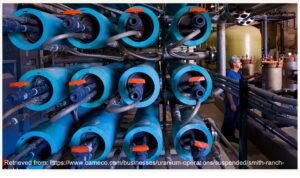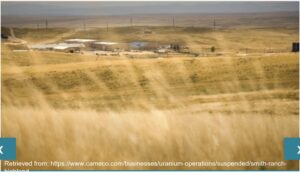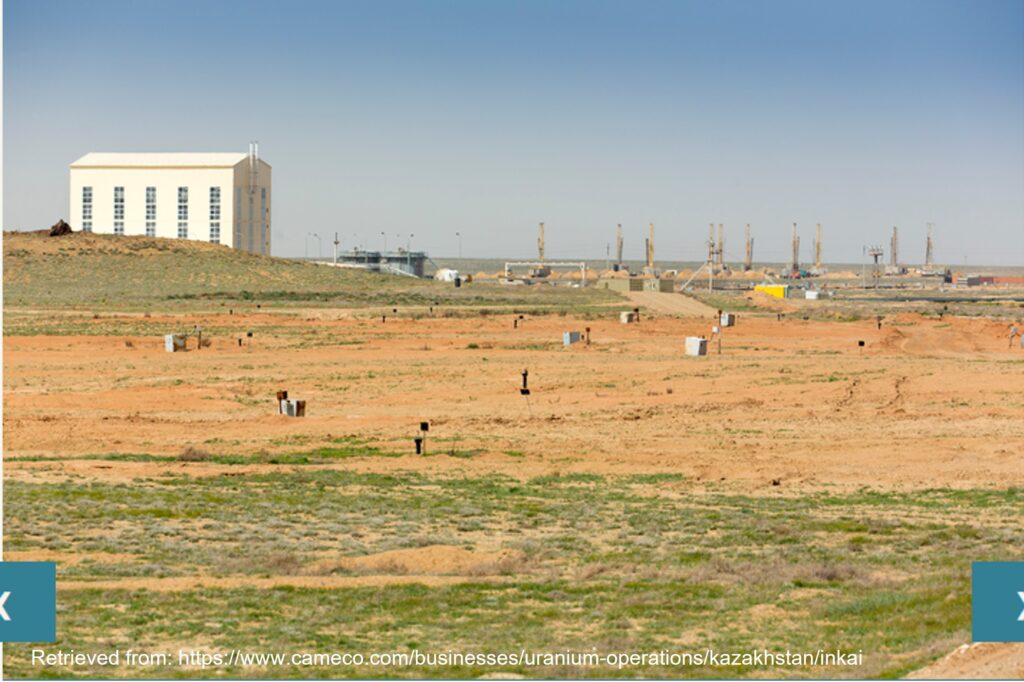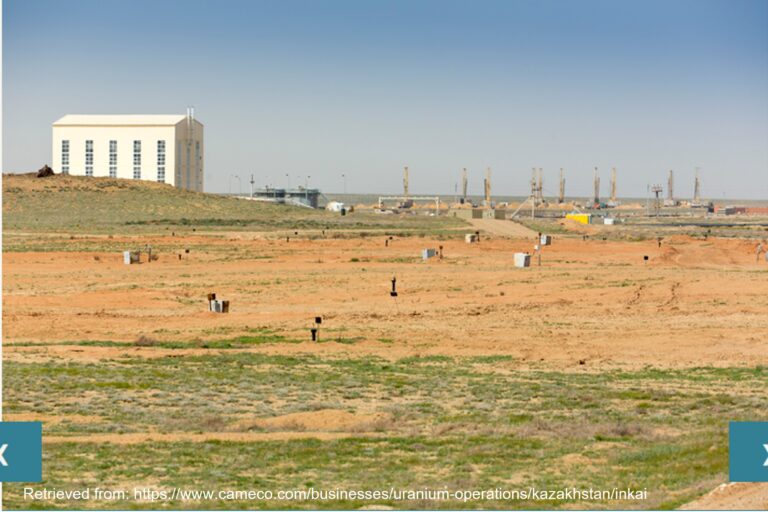Industrial mining is the inspiration of recent society, every little thing that isn’t grown as a crop is finally derived from minerals or petroleum extracted from the Earth. Mining can be costly and identified to trigger many environmental points associated primarily to poisonous mine wastes and habitat destruction. In-situ leaching (ISL) strategies, nevertheless, are more and more permitting sure deposits to be mined with out excavation, sidestepping among the most harmful, and costliest, components of mining.
What’s ISL?
Because the identify implies, in-situ leaching entails the leaching and extraction of metals from underground ore our bodies. The method is much like heap leaching, the place ore is extracted and piled up so leaching options could be circulated by it, besides that ISL entails no excavation.
Basically, ISL entails injecting a chemical answer, or lixiviant, into the ore physique by an injection effectively; this answer circulates by the ore, dissolving the goal minerals, and concentrating the metallic of curiosity right into a chemical brine. This brine is then pumped to the floor for processing through an extraction wells surrounding the injection website. This brine is then handled in a processing plant to extract the aspect of curiosity. Monitoring wells should even be put in across the mine to make sure groundwater just isn’t being contaminated by the chemical brine.

There are a number of primary necessities for utilizing ISL. First, the host rocks should be permeable sufficient for the answer to be pumped by it. Because of this ISL in usually restricted to comparatively shallow deposits hosted in unconsolidated sediments (ie. filth), or sedimentary rocks. Second, the aspect of curiosity, and the mineral(s) it’s hosted in, should be soluble sufficient to be dissolved. In precept something could be dissolved by the fitting chemical, however in observe just some minerals could be dissolved by available chemical options rapidly sufficient to make ISL sensible. Third, the stream of the answer should be controllable. This usually means the deposit needs to be positioned beneath the water desk and contained by impermeable (often clay-rich) rocks. Lastly, the deposit should not include any minerals which can prematurely neutralize or in any other case react negatively with the answer.
Benefits and downsides
The principle benefit of ISL is the truth that it skips the tough and dear step of excavating massive volumes of fabric. This implies ISL mines require a lot much less infrastructure and much fewer staff, maintaining prices down and stopping office accidents. The shortage of excavation additionally means no large open pits or sprawling, probably poisonous tailings and waste rock piles; you could possibly stroll over an ISL mine with out even realizing it. There are even main reductions in greenhouse fuel emissions as a result of ISL doesn’t require massive fleets of diesel-powered gear or energy-hungry transportation and grinding of ore. Whereas ISL isn’t at all times an choice, when it’s it’s usually essentially the most cost-effective and environmentally pleasant methodology: a uncommon win-win for miners and the setting.

The principle drawback of ISL is how few deposits it may be utilized to. Though work is underway to develop new strategies for extra deposit varieties, there’s little or no likelihood of ISL changing typical mining in most settings. Aluminum, for example, may be very tough to dissolve, and can in all probability by no means be mined through ISL.
Since ISL takes place out of sight underground it may be obscure and management the chemistry intimately. Because of this when one thing goes fallacious, low metallic restoration for example, it may be onerous to determine right the issue.
In situ leaching isn’t fully freed from environmental penalties both. The method creates massive volumes of poisonous used answer which should be disposed of. It additionally requires remediation as soon as mining is full. Remediation often consists of extracting contaminated groundwater and injecting options designed to stabilize the newly disturbed chemistry of the deposit in order that dissolved metals and different poisonous byproducts don’t escape into the remaining groundwater. Remediation can take years, usually as lengthy or longer than the precise mining, and the method continues to be not absolutely understood.
What Deposits could be mined with ISL?
Probably the most simply mined deposits are evaporites, reminiscent of halite (frequent salt) and sylvite (AKA potash, the supply of potassium fertilizers), which could be simply dissolved by contemporary water. Actually, the method can truly work too effectively, dissolution of an excessive amount of materials can go away massive unsupported cavities which will collapse, creating sinkholes.
The metallic mostly mined through ISL is uranium (U). Uranium has the excellence of being extremely soluble in oxygen-bearing water, and the addition of acids (sulfuric or much less generally nitric acid) or carbonate options permits most U minerals to be rapidly dissolved. Not all U deposits are fitted to ISL, pegmatite deposits, for example, are too cohesive and impermeable to permit ISL options to flow into. Sandstone fashion deposits, alternatively, that are hosted in extremely permeable sandstones usually close to the floor, are so effectively suited to ISL that there’s little cause to even contemplate different strategies. About half of world U manufacturing comes from ISL operations in Australia, the US, and, particularly, Kazakhstan. Denison Mines has just lately demonstrated extremely profitable checks of ISL on unconformity-related deposits within the Athabasca Basin, Canada, opening the thrilling chance of making use of very low value ISL strategies to a deposit kind which is extraordinarily excessive grade however usually difficult to mine conventionally.
Some copper (Cu) deposits could be mined through ISL, in actual fact ISL has been used to extract Cu in China for over 1000 years. Sulfuric or hydrochloric acid is used to dissolve sure Cu minerals reminiscent of malachite, azurite, tenorite, and chrysocolla. The commonest Cu ore minerals reminiscent of chalcopyrite and bornite, nevertheless, are sulfides which may solely be dissolved with the addition of oxidants reminiscent of oxygen. Even then, this course of is sluggish, and ISL is used on comparatively few Cu deposits.
In situ leaching can be used for some rare earth element (REE) deposits. The ion-adsorbed clay deposits of southern China and Myanmar are mined through (usually primitive) ISL strategies, and there’s appreciable curiosity in utilizing ISL on different REE deposits hosted in permeable sediments and host rocks.
There have been makes an attempt in mine gold, which is typically extracted through heap leaching, with ISL, however these haven’t been profitable to date.
ISL in motion
The Inkai mine is a superb instance of the potential of ISL. Inkai is a roll entrance (sandstone style) U deposit in Kazakhstan which is hosted in permeable sandstones at depth of about 250 m. Confirmed and possible reserves are 344 Mt at 0.04% U3O8. Mining commenced in 2009 and is anticipated to proceed till 2045. It’s 60% owned by Kazatomprom, which is majority owned by the Kazakh authorities, and 40% by Cameco.

Inkia makes use of a mix of oxidants and sulfuric acid to supply as a lot as 10.4 Mlbs of U3O8 per 12 months, with restoration of 85%. Regardless of the very massive measurement of the deposit, the extraordinarily low grade would make Inkai very tough mine economically through typical strategies. The overall value of ISL manufacturing, nevertheless, is remarkably low, lower than 10$/lb, enabling the mine to function efficiently regardless of a few years of low U costs and comparatively low U restoration. Much more remarkably, the mine website is dominated not by pits and tailing ponds, however by grass and vegetation.
Abstract
In-situ leaching permits for very low value and environmentally benign mining of sure deposits. It’s most frequently utilized to sure forms of U deposits, however can be used for uncommon earths, Cu, and probably others if the situations are proper. Whereas using ISL is presently fairly restricted, and the approach won’t ever displace typical mining in lots of areas, ISL is more likely to be utilized to a wider vary of deposits sooner or later.

